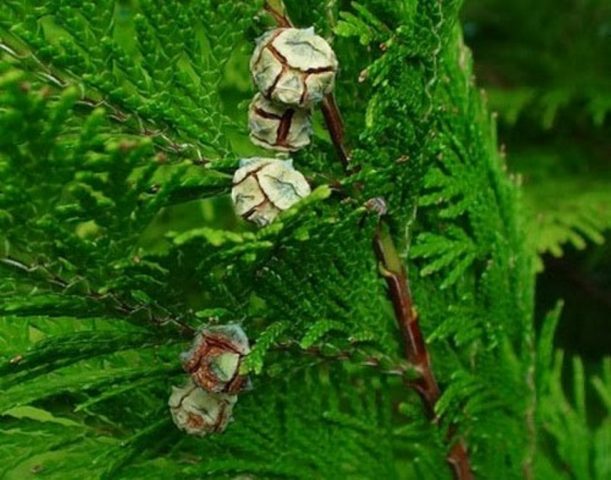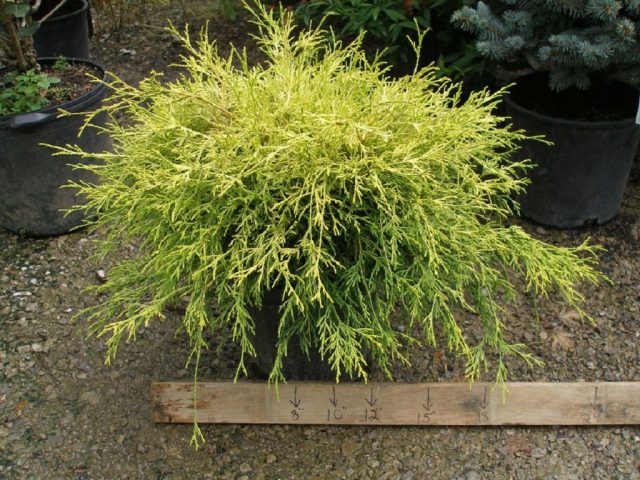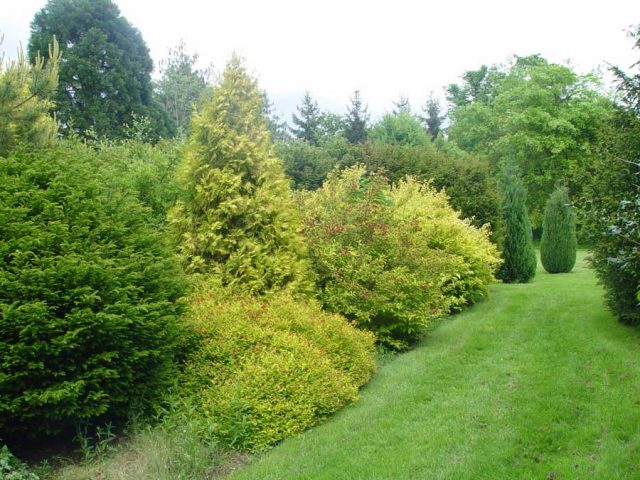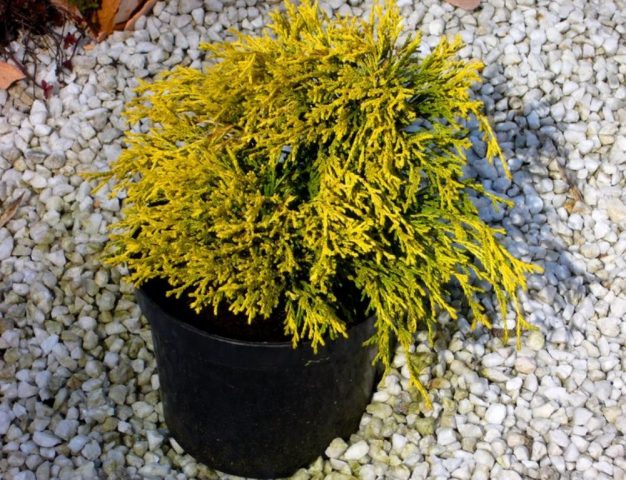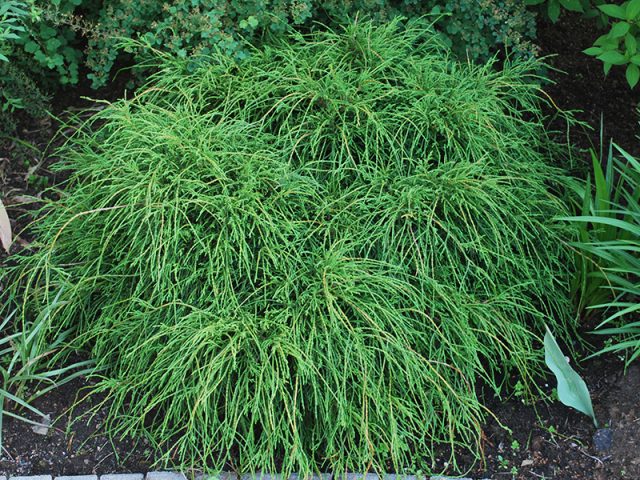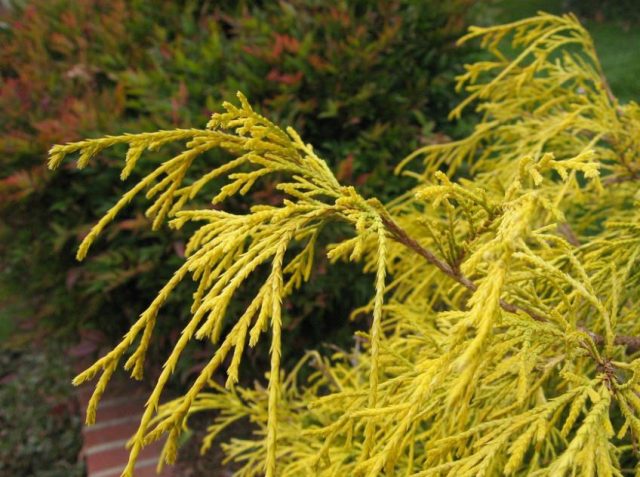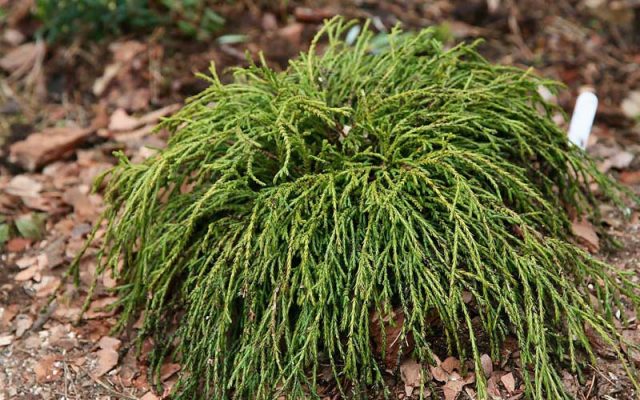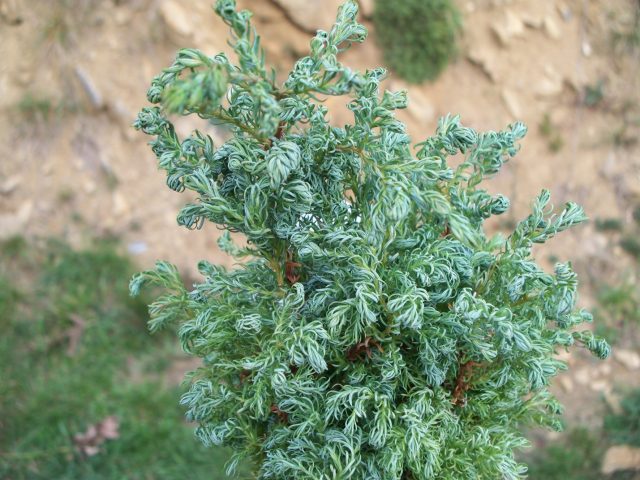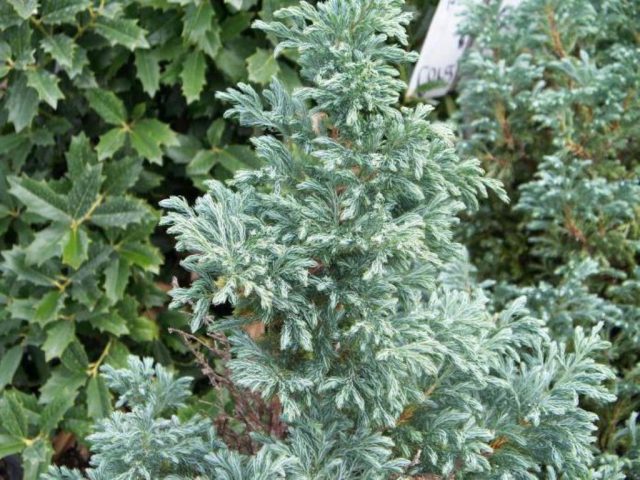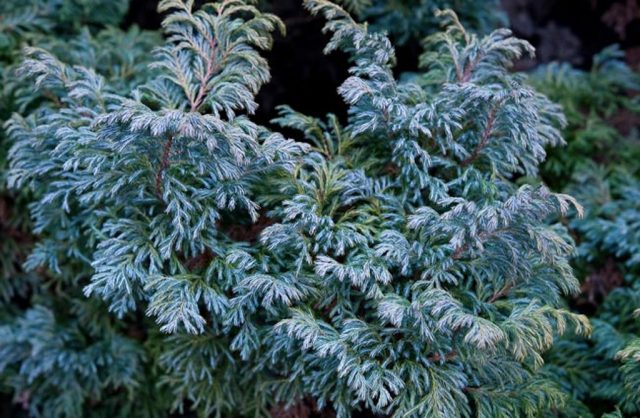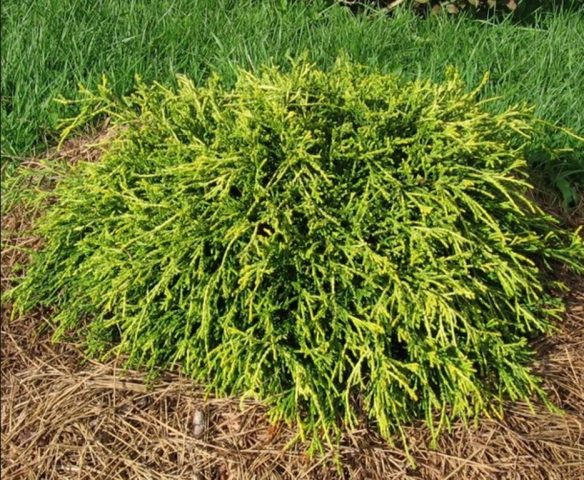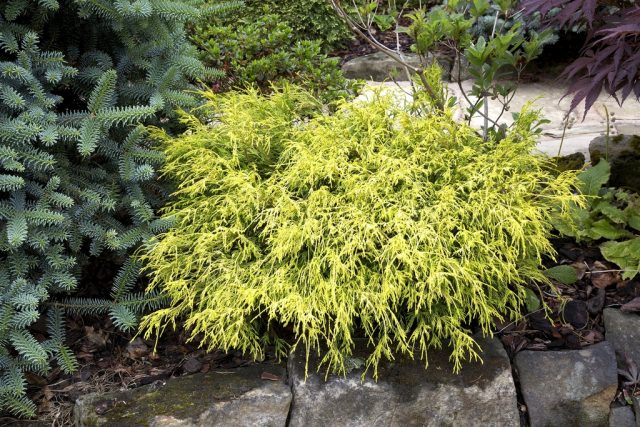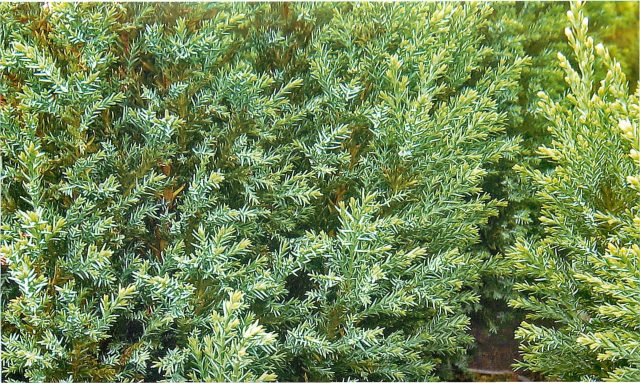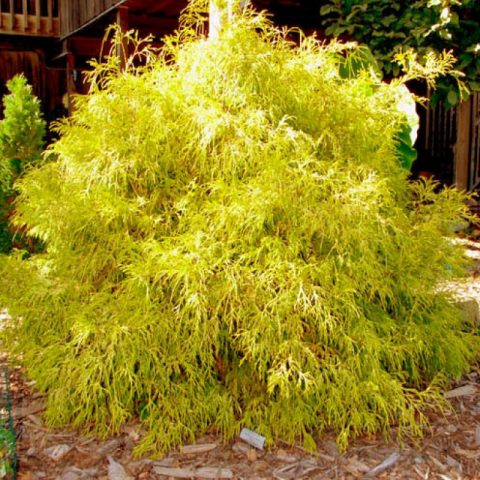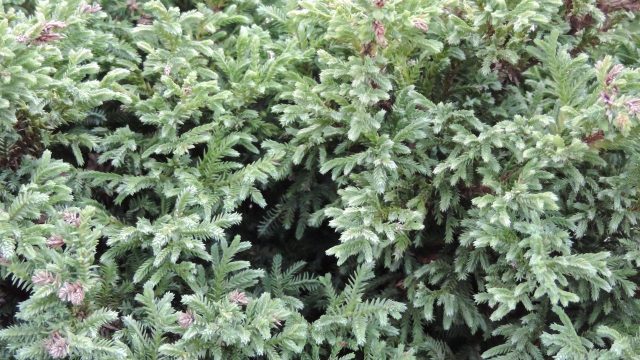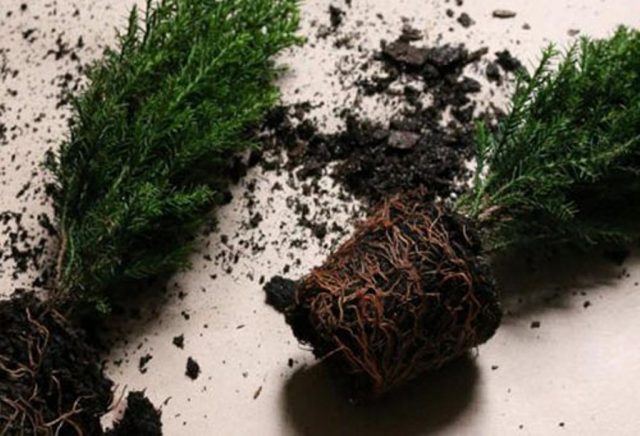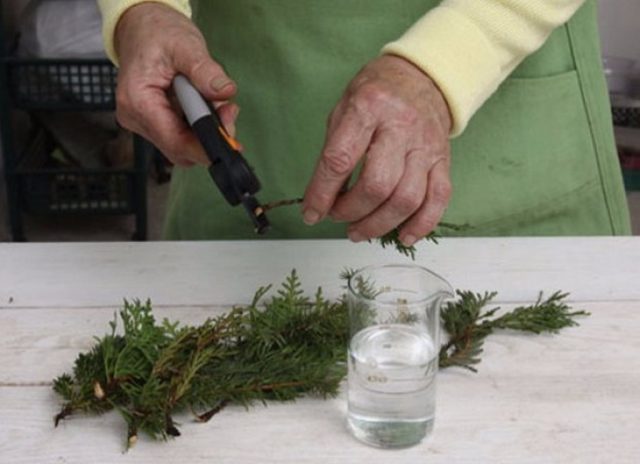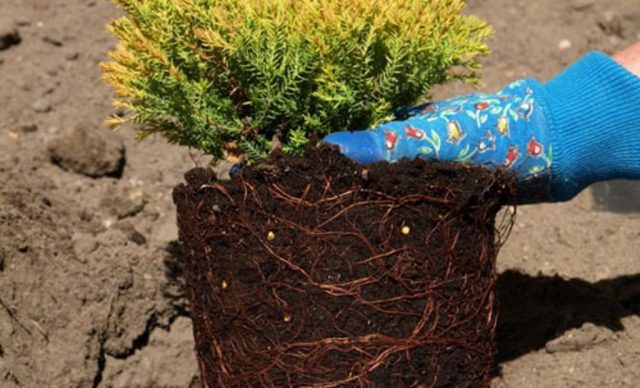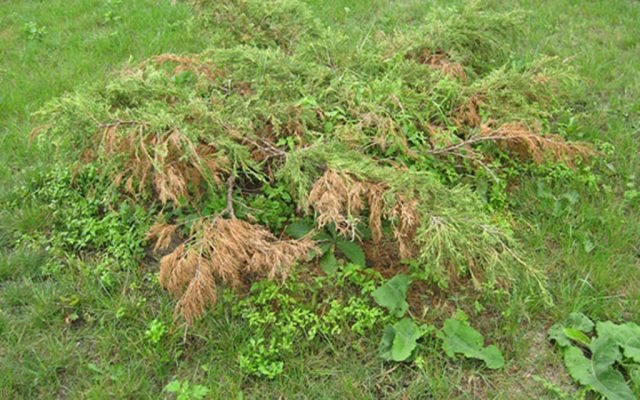Content
- 1 Description of pea cypress
- 2 Energy for the home and properties of pea cypress
- 3 Pea cypress in landscape design
- 4 Pea cypress varieties
- 4.1 Pea cypress Filifera Aurea
- 4.2 Pea cypress Filifera Nana
- 4.3 Pea cypress Filifera Aurea Nana
- 4.4 Pea cypress Filifera Gracilis
- 4.5 Pea cypress Sangold
- 4.6 Pea cypress Baby Blue
- 4.7 Pea cypress Boulevard (Boulevard)
- 4.8 Pea cypress Squarroza
- 4.9 Pea cypress Plumosa Aurea
- 4.10 Pea cypress Golden
- 4.11 Pea cypress White Beauty
- 4.12 Pea cypress Golden Mop
- 4.13 Pea cypress Gold Spangle
- 4.14 Blue Moon pea cypress
- 5 Planting rules for pea cypress
- 6 Pea cypress care
- 7 Reproduction
- 8 Features of growing pea cypress in the Moscow region
- 9 Diseases of pea cypress
- 10 Reviews of pea cypress
- 11 Conclusion
Pea cypress or Plumosa Aurea is a popular coniferous tree from the cypress family. The plant began to be planted for gardening personal plots from the 18th century. Recently, gardeners from all over the world began to use conifers in landscape design, in addition to flowering plants. The pea cypress is a bright representative of conifers, which is used not only for growing in the garden, but also as a houseplant.
Description of pea cypress
Novice gardeners often confuse cypress with cypress. The pea cypress differs from its southern brother as follows:
- frost resistance;
- branches are located in the same plane;
- small cones ripen on the plant.
The pea cypress is a cone-shaped tree with horizontally growing branches forming a pyramidal crown. The bark is smooth, light brown. Under natural conditions, it propagates by seeds, at home - by cuttings and grafting.
In autumn, yellow-brown cones appear between the gray-blue needles, reaching 6 mm in diameter. Due to the size of the pea-like cones, the cypress got its name.
The pea cypress came to our country from Japan. At home, the tree reaches 30-50 m in height. But in our country the plant grows up to 1 m.It depends on the following factors:
- cold winters;
- excess or lack of moisture;
- intensely scorching sun;
- low air humidity.
Energy for the home and properties of pea cypress
The pea cypress includes several species that differ in the shape and color of the needles, the size and method of cultivation. There are specimens that can be kept on windowsills. But since the cypress belongs to the cypress family, it is shrouded in omens and superstitions.
Here is some of them:
- Since ancient times, it has been believed that the cypress was intended for cultivation near the cemetery, as it was a symbol of sadness and longing. Therefore, the one who starts a miniature tree may be in constant depression, which will negatively affect health.
- Ephedra has powerful energy. If you grow it on a windowsill or opposite a doorway, then it will protect you from the evil eye, but also will not allow you to enjoy life.
- Many superstitious summer residents consider the plant "muzhegon". A young woman can turn into an old maid, a happy couple can quickly end a marriage.
- The coniferous tree has established itself as a vampire plant.To have a good sleep, it is not recommended to install it in the bedroom.
Although the cypress tree is considered unsuitable for growing in an apartment, it also has positive qualities:
- like all conifers, it purifies the air;
- pine oil is used in aromatherapy;
- the plant is recommended to grow for people with stagnation in life, work, creativity.
It is up to everyone to believe superstitions or not, but it must be remembered that all changes in life depend on people, and not on the plant. Growing cypress on the windowsill, you need to enjoy the beautiful needles and the smell of the coniferous forest.
Pea cypress in landscape design
The pea cypress was discovered in ancient Japan in 1835. It was brought to Crimea in 1859, and in St. Petersburg they began to decorate palace gardens and parks in 1860.
Nowadays, the cypress has found wide application for landscaping the site:
- in single and group landings;
- dwarf varieties adorn alpine slides, rocky gardens and rockeries;
- looks harmoniously in a group with conifers and decorative deciduous shrubs.
Pea cypress varieties
The pea cypress has more than 100 species, which differ in shape, size and color of needles. Each species is unique and suitable for growing in a personal plot.
Pea cypress Filifera Aurea
Pea cypress Filifera Aurea is a tall plant that grows up to 5 m in height. The wide-conical crown is formed by filamentous shoots covered with soft, bright yellow needles. The plant is light-requiring; when grown in the shade, it loses its decorative appearance.
For good growth and development, ephedra are recommended to be planted on nutritious, drained soil. The place is chosen quiet, protected from drafts.
The plant is used to decorate alpine hills, rockeries, rocky gardens. And also the view looks good in single and group plantings.
Pea cypress Filifera Nana
Filifera Nana pea cypress is a low-growing coniferous shrub that has found application in landscape design. A dense spherical shrub covered with bright emerald needles and small light brown cones, which ripen in the first half of September.
The cypress is a slow-growing, in 20 years it grows half a meter in height and 1 m in width. Due to its small size, the shrub can be grown in an apartment. Propagated by cuttings, loves the sun and moist nutritious soil.
Pea cypress Filifera Aurea Nana
Filifera Aura Nana belongs to the dwarf varieties of pea cypress. Slow growing, evergreen shrub with a spherical golden olive crown. Seasonal growth is 5 cm in height and width.
The species is unpretentious, frost-resistant, forms a densely branched crown of arcuate curved shoots. It develops well on moist, nutritious soil and in an open sunny place.
In landscape design, pea cypress is used to decorate alpine slides, Japanese and Chinese gardens, looks good against the background of brick and stony masonry.
Pea cypress Filifera Gracilis
Pea cypress Filifera Gracil is a tall shrub, an adult plant grows up to 5 m in height. Filifera Gracilis is considered the most frost-resistant variety; it tolerates cold, little snow winters in central Russia well.
The species forms a wide-conical crown of filiform, strongly drooping shoots. Designed for cultivation in gardens of the Chinese, Dutch and Japanese style, in rock gardens and rockeries.
Pea cypress Sangold
Pea cypress Sangold is a stunted species. An adult plant reaches 1 m in height and 2 m in width. The wide-conical crown is formed by flexible, drooping reddish-brown shoots.
Cypress Sangold, description:
- golden emerald needles do not lose brightness on cold, winter days;
- the species is frost-resistant, winters well at a temperature of -25 degrees;
- a young plant requires shelter, since spring frosts can destroy the growth of the current year;
- spring sanitary pruning is necessary to give a decorative look.
The pea cypress Sangold needs proper planting and regular care. The place is chosen light, with nutritious, drained soil. On dry soil, growth and development stops.
Care consists in regular watering, mulching the soil. Pruning is needed to give a decorative look and remove damaged, non-wintered branches. For the winter, the young plant is covered, the soil is mulched with peat, straw or rotted compost.
Pea cypress Baby Blue
Pea cypress BabyBlue is a dwarf, cone-shaped shrub, compact in shape. The soft, needle-shaped needles are colored bright olive on one side and silvery bluish on the other.
The species prefers to grow in a sunny area, protected from cold winds. The soil should be fertile, well-drained, acidic or slightly alkaline.
Baby Blue looks good in single planting, in horizontal compositions, for growing in containers and for drawing borders.
Pea cypress Boulevard (Boulevard)
Pea cypress Boulevard is a decorative, slow-growing species with narrow-conical, bluish-silver needles. It differs from other varieties and closely resembles thuja or juniper.
The species is undersized, reaching a height of 1m. Due to its decorative appearance, the plant is widely used in landscape design.
Pea cypress Squarroza
An evergreen species with a broad-toned dense crown. The decorativeness of the plant is given by needle-like, silvery-blue needles, soft and smooth to the touch.
The species prefers moist, well-drained and nutritious soil. The crop is slow-growing, with an annual growth rate of 25 cm in height and 15 cm in width.
Frost resistance is high, it can withstand temperatures as low as -30 degrees.
Pea cypress Plumosa Aurea
An evergreen, broadly conical tree forms a dense crown of red-brown, horizontally growing shoots. The plant is covered with golden-yellow needle-like needles, between which small cones with a diameter of no more than 6 mm in diameter can be seen.
The variety is decorative due to the color of the needles, which becomes brighter in winter. Designed for growing on alpine hills, in rocky gardens, next to conifers and ornamental plants.
Pea cypress Golden
Pea cypress Rays of the Sun or Golden is a medium-sized, evergreen tree that grows up to 5 m in height. The wide-conical crown is formed by thin, drooping, light brown shoots.
Bright golden needles with a weak aroma brighten in winter and look elegant on the snow-white snow. Despite its slow growth, the plant forms miniature light brown cones with a diameter of 6 mm to 1 cm in the year of planting.
Pea cypress White Beauty
White Beauty pea cypress is a low-growing coniferous shrub. The cone-shaped crown is formed by thin flexible shoots covered with silvery-green needles with snow-white tips.
The species is slow-growing, develops well in fertile, well-drained soil. Prefers a bright, draft-free place. White Beauty is frost-hardy, can grow in regions with unstable weather and winters with little snow.
In landscape design, they are used for planting in single and group plantings, for decorating flower beds and next to ornamental shrubs.
Pea cypress Golden Mop
A dwarf evergreen shrub with a flat-spherical crown. Cord-like shoots are branched and hanging. The height of an adult tree reaches up to half a meter in height, so the species is recommended for growing at home.
Light gold, scaly needles are soft and smooth. Light brown buds are small and form in the first year after planting.
The pea cypress of the Golden Mop variety is best grown in a sunny place, since in partial shade the plant loses its decorative appearance. The frost resistance of the species is average; when grown in a harsh climate, young shoots without shelter can freeze slightly.
In landscape design, the bush is used for planting in rock gardens, deciduous and coniferous compositions and as a tapeworm on lawns.
Pea cypress Gold Spangle
Pea cypress Gold Spangle is a tall coniferous plant, reaches a height of 4 m, a diameter of 150 cm. Dark brown shoots are short, involuntarily located on the trunk, making the bush look tousled.
The bright golden needles are soft and smooth, changing color to copper when cold weather sets in. In order for the pea cypress to grow and develop well, it must provide:
- sunny or semi-shady area;
- slightly acidic, moist, well-drained soil;
- shelter for the winter;
- regular soil mulching.
The variety is recommended to be planted in rocky and heather gardens, in rock gardens and next to green conifers.
Blue Moon pea cypress
A low-growing shrub with short, stiff shoots. The spherical crown is covered with steel-blue needles, which lighten in winter. The variety is unpretentious, can grow in a sunny place and in partial shade. It is undemanding to the soil, maintenance is minimal, and does not need pruning.
The pea cypress blue was named the best new product in 2015 and was awarded the highest award.
The plant looks beautiful among green conifers, undersized ornamental shrubs, in flower beds and rock gardens.
Planting rules for pea cypress
To wait for the expected result from planting pea cypress, you need to choose the right place and land.
The pea cypress grows well and develops in a bright place where strong, cold winds will not reach it. The soil on the site must be nutritious and well-drained.
When planting several bushes, it is necessary to maintain an interval of at least 1 m, since the root system develops horizontally.
How to plant a plant correctly:
- A light nutritious soil is prepared. This can be humus or purchased soil intended for conifers.
- Dig a hole, the depth of which should correspond to the size of the root system.
- Set the seedling in the center of the planting pit and begin to fill it with prepared soil, tamping each layer so that an air cushion does not arise.
- The land is watered and mulched.
Pea cypress care
The pea cypress is an unpretentious plant. To grow a healthy and beautiful shrub, you need to make a minimum of effort and maximum care.
Cypress loves moist soil without stagnant water. Watering is carried out once every 7 days. For each bush, you must spend at least 10 liters of water. For irrigation, settled, warm water is used.
And also high humidity is important for the shrub. If the humidity is low, the plant quickly loses its decorative appearance.
The first top dressing is applied 60 days after planting. For this, complex mineral fertilizers with a high nitrogen content are used. Top dressing is carried out 2 times a month. From the 20th of July, fertilizers are not applied.
An adult pea cypress is fed in June-July with fertilizer for conifers. The interval between feeding should be at least 10-15 days.
Pea cypress needs regular pruning. It is carried out by:
- For the formation of the crown, it is not recommended to remove more than 30% of the shoots. Carried out 12 months after planting.
- Sanitary pruning - remove damaged and non-wintered shoots.
- Autumn haircut - young growths are shortened by 1/3.
Reproduction
To preserve varietal specimens, cypress can be propagated by cuttings and layering.
In spring or autumn, cuttings 10-15 cm long are cut, treated in a growth stimulator and buried in a substrate made of sand, perlite and pine bark in equal proportions.
For quick rooting, the seedlings are covered with plastic wrap to create a micro-greenhouse. After the appearance of young growths, the film is removed, the container is rearranged to a warm, bright place and begins to look after as an adult plant. After reaching 20-25 cm, the plant is transferred to a permanent place.
Reproduction by branches is effective only for dwarf varieties. For this, a healthy, low-growing shoot is selected and placed in a prepared trench so that the top rises above the surface of the earth. The branch is covered with earth, spilled abundantly and mulched. After rooting, the young plant is separated from the mother plant and transplanted to a new, prepared place.
Features of growing pea cypress in the Moscow region
In order for the plant to take root and develop well, the planting hole for the pea cypress begins in the first half of October. For this:
- The soil is dug to a depth of 90 cm. The holes are made at a distance of 1 to 4 m, depending on the type of plant.
- The bottom of the planting hole is covered with a 15 cm layer of drainage.
- The next step is to place the fertilizer. For this, peat, sod land, sand and humus are combined in a ratio of 2: 3: 1: 3. The top layer of earth is introduced into the prepared mixture and everything is thoroughly mixed.
- The dug holes are covered with protective material to create a favorable microclimate. In the spring, the fertilizer will crush, and the earth will be ready to receive a young plant.
- In the spring, the hole is watered, the root system is straightened at the seedling.
- The prepared planting material is placed in the center of the hole and 300 g of nitroammophoska is added.
- The roots are covered with earth, tamping each layer.
- The soil is abundantly shed and mulched.
Diseases of pea cypress
Despite the high immunity to diseases, the plant can be affected by root rot. It appears with improper care or unfavorable climatic conditions. To prevent stagnation of water on the site, you must:
- choose the right place with deep groundwater;
- lay a drainage layer at the bottom of the planting hole;
- watering abundantly as needed.
If the plant is sick, treatment will be ineffective. Therefore, it is dug up, all damaged roots are removed, the ground is treated with fungicides, and the plant is transplanted to a new place.
Of insect pests, pea cypress can damage:
- Spider mite. The first signs of the appearance of a pest are yellowing and falling of the needles. For treatment use drugs "Nissorano", "Apollo".
- Shield. The insect sucks the sap from the tree, which leads to its death. At the first sign, the plant is sprayed with Nuprid.
Subject to the rules of care and timely sanitary pruning, the coniferous plant will attract attention with its beautiful appearance.
Reviews of pea cypress
Conclusion
The pea cypress is a bright representative of conifers, which is used for landscaping a personal plot. If the task is set to make it beautiful and unique, you should not be afraid of difficulties and believe in superstitions. Growing a coniferous tree is not difficult and very interesting.
